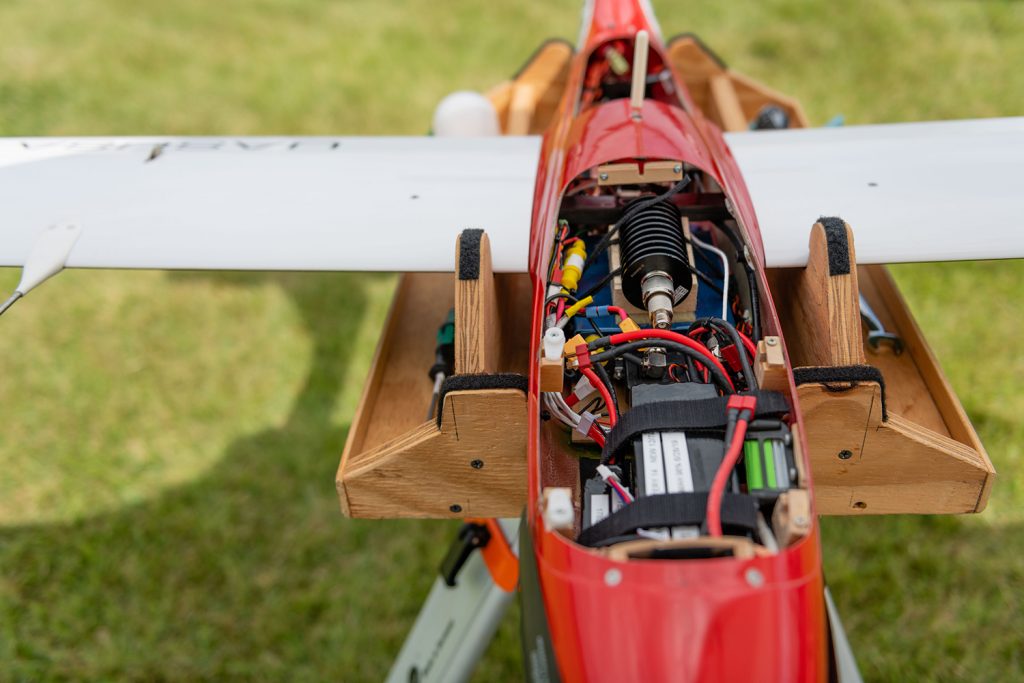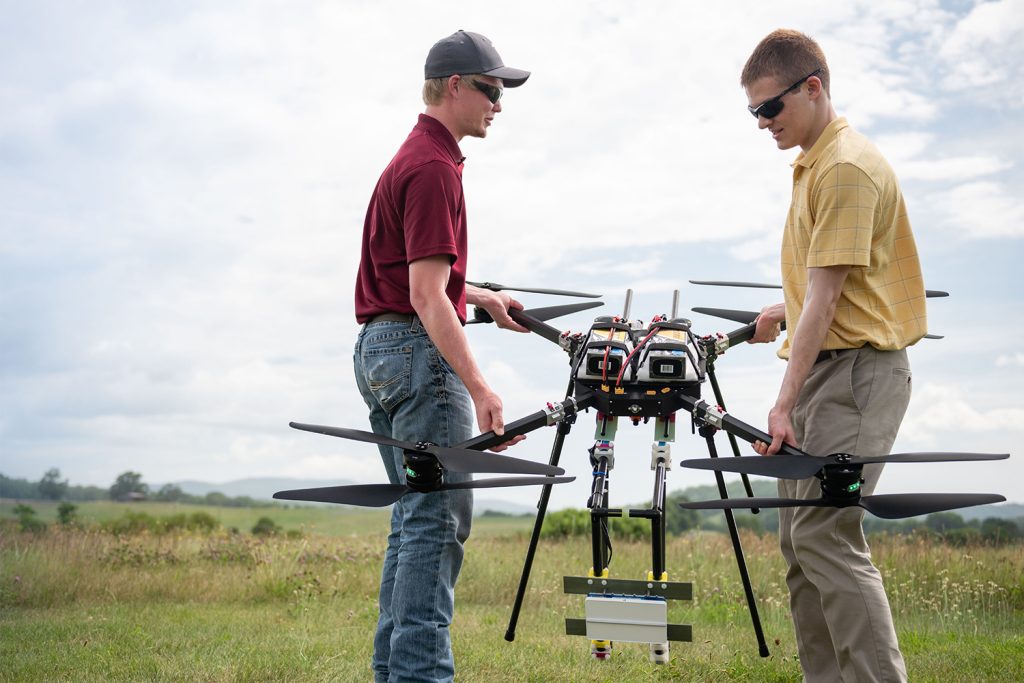
This NASA aircraft was one of two mock intruders used in drone tests, simulating a close approach to evaluate whether a radar-equipped drone could detect and avoid them. Photo by Amy Robertson for Virginia Tech
In the drone industry, it’s called “the detect-and-avoid problem.” Enabling drones to sense nearby aircraft and move out of their way has been a major obstacle for a technology confined to specialized applications to reach its full potential. Drone tests in Virginia offer promise in overcoming that hurdle.
“There are countless beneficial applications for drones,” stated Mark Blanks, the director of the Virginia Tech Mid-Atlantic Aviation Partnership (MAAP). “But in order for them to be practical and scalable, the industry needs technology that’s proven it can enable much greater autonomy, especially in detect and avoid.”
MAAP is one of seven sites designated by the U.S. Federal Aviation Administration to lead the research supporting the integration of drones into the national airspace. Recent drone tests have provided a real-world evaluation of an “end-to-end” detect-and-avoid system. It includes a set of components that allows a drone not only to detect intruders, but to maneuver autonomously out of the way.
The drone tests were the culmination of a year-long project called RAAVIN, the latest installment in a long-running collaboration between MAAP and the National Aeronautics and Space Administration investigating potential solutions to detect and avoid.
Drone tests crucial to BVLOS operations
One reason detect-and-avoid technology is so crucial for the drone industry is because it can enable longer-distance flights by releasing a UAV from its dependence on the eyesight of its ground-based pilot or a nearby visual observer.
Federal law requires all aircraft to have a way to see and avoid other air traffic. For drones to share the airspace safely, they need to be able to meet this requirement. But while the pilot of a manned aircraft can always scan the airspace from the cockpit, the pilot of a drone loses the ability to ensure the airspace is clear the second the drone flies beyond the point where they can visually scan its surroundings.
That’s why the FAA’s regulations for commercial drone flights stipulate that an unmanned aerial vehicle (UAV) must not go beyond the visual line of sight (BVLOS) of its operator.
The BVLOS requirement can be waived if the operator can make a case that the specific operation they’re proposing can be done safely. But for drones to reach their economic potential, those longer flights will need to be routine, not authorized by individual approvals meted out case by case. That won’t happen until researchers can come up with a technology, or a set of technologies, that can replicate the ability of a pilot’s eyes to scan the sky.
The leading contenders are optical sensors, acoustic sensors, and radar. But sensing is only a third of the puzzle. The system also has to be able to detect unsafe conditions and direct an appropriate avoidance maneuver.
“We’re just now getting to the point where these three components — the detect, alert, and avoid piece — are mature enough to be able to assemble them and get good results from the test,” said John Coggin, MAAP’s chief engineer, who oversaw the RAAVIN project.

Jeremy Spink, an engineer at the Virginia Tech MAAP, and undergraduate intern Matthew Foran carry a radar-equipped UAV out to its launch site during NASA drone tests for autonomous detection and avoidance of other aircraft. Photo by Amy Robertson for Virginia Tech
To put one promising system through its paces, the research team outfitted a multirotor drone with a state-of-the art Echodyne radar and a NASA detect-and-avoid software system called ICAROUS.